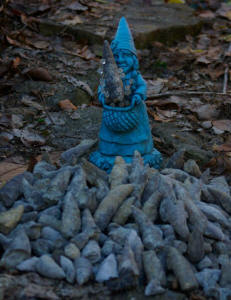
A Garden Gnome selects a new hat from the many Grewingkia canadensis Horn Coral found on this site.

A Garden Gnome selects a new hat from the many Grewingkia
canadensis Horn Coral found on this site.
It was a foggy late October morning driving along country roads about a 90
minutes from Cincinnati, Ohio.
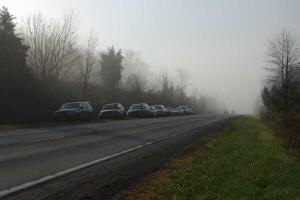
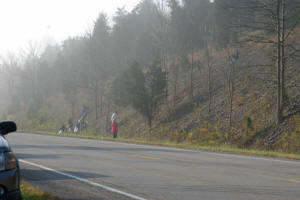
There was still frost on the ground when we arrived at 10 am.
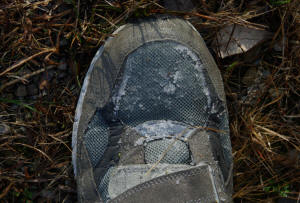
We had a light but decent turn out of members at the field trip. They had been
informed at the meeting the night before to bring a bucket (not a bag or basket)
with them to find tons of the largest specimens of horn corals in the
Cincinnatian.
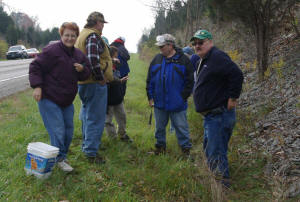
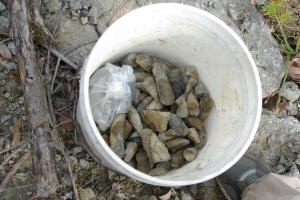
Large horn coral littered the upper edges of the road cut
where it's really hard to keep from rolling down due to the 1 to 2 feet of loose
fossil material.
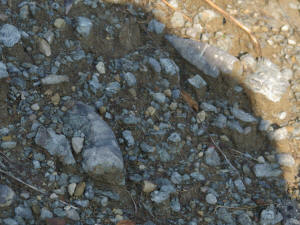
The site exposes the Lower Whitewater formation of the
Richmondian Stage. The rocks and fossils are somewhere in the neighborhood of
438 million years old.
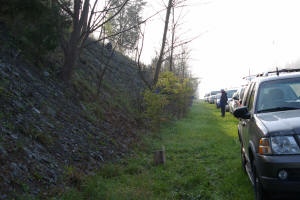
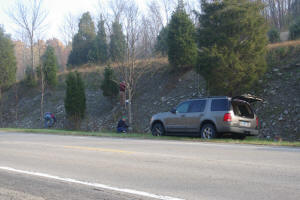
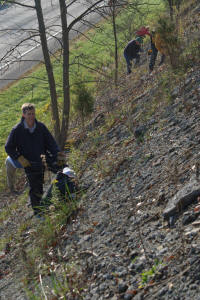
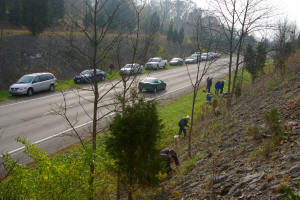
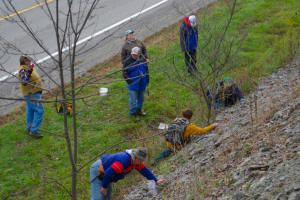
Fossils Found That Day
The best find of the day was a series of plates from a Cyclocystoid.
This is a rare Echinoderm that has been found
complete on this site on a previous field trip.
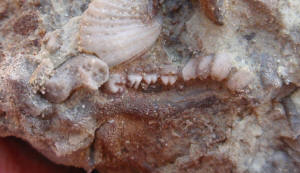
Corals
The most common horn coral found on the site is the large Grewingkia
canadensis.
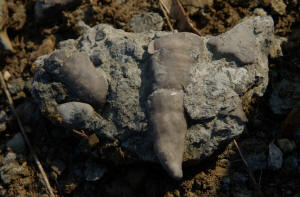
Here are the septa from a horn coral from
the site.
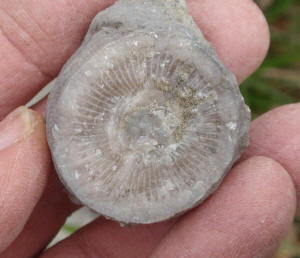
Mysterious forms were unearthed at the field trip that
turned out to be coral septa as well. The picture below is of a mystery fossil
found that day that too closely resembles coral septa to be anything else.
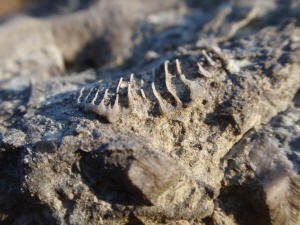
There have been previous cases on Dry
Dredgers field trips where these septa are found separated from the rest of the
coral structure and have confused fossil finders.
The second most common horn coral genera found on the site was
Streptelasma. This coral attaches themselves to objects on the sea
floor giving their narrow end a flattened effect. Streptelasma
also have a wider opening then Grewingkia and are generally
smaller in size.
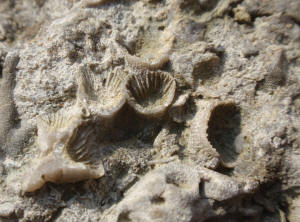
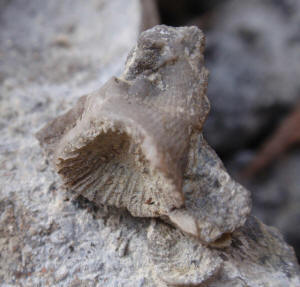
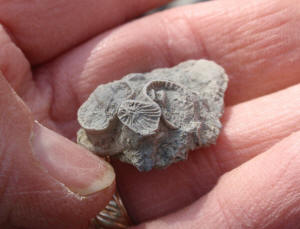
Another type of coral found are colonial corals. These corals
attach to each other to form a mesh. The next two pictures are a very
interesting example of Protaraea
growing on the "feeding edge" of a Strophomenid
Brachiopod. If this Brach were removed from the rock, you might find the
colonial coral has covered the entire convex surface of the brachiopod, which is
thought to be the upper surface of the brach in life.
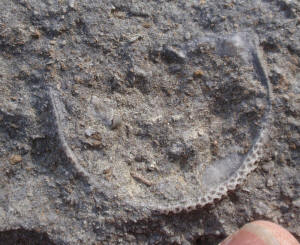
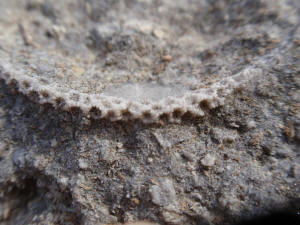
Another colonial coral we found was Tetradium. This coral
formed a thick mat over the ocean floor, particularly when you look at the top
of the Lower Whitewater formation where you see the Saluda layers exposed.
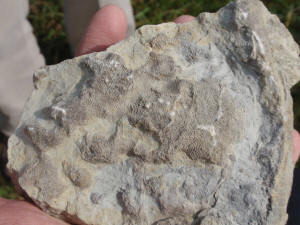
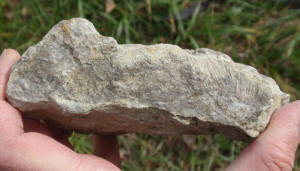
Bryozoans
Bryozoans look superficially like coral. They too were found in great numbers on the site.
Trace Fossils
Trilobites
Pelecypods (Bivalves/clams)
We found lots of internal molds of the clam Ambonychia.
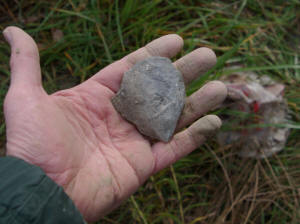
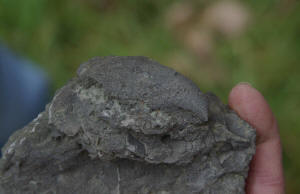
We found even more examples of a clam with calcite
preservation of its shell. It's called Caritodens.
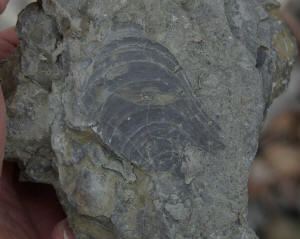
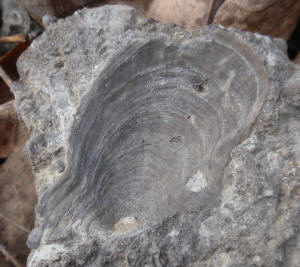
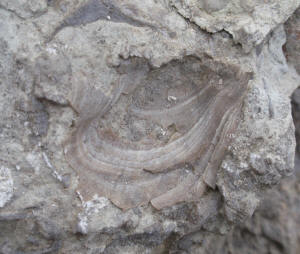
This next example of Caritodens is nice because
it has both the negative and positive molds preserved. This was donated by a
member for a current study by a California paleontologist on clam shell microstructure.
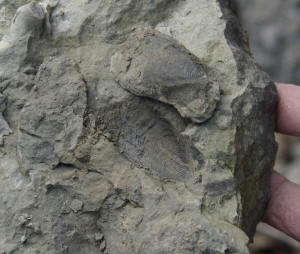
Nautiloid Cephalopods
One of the things this site is known for is finding curved or coiled shelled Nautiloids. One was found this trip as well. (below)
Most of the Nautiloid Cephalopods found were straight-shelled (next 3 pics).
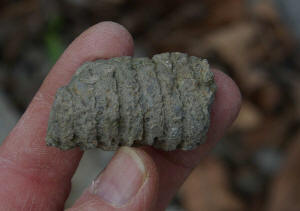
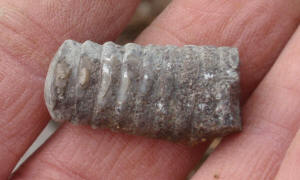
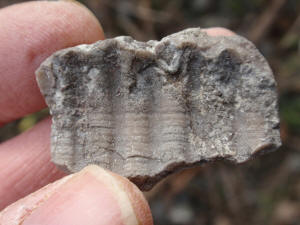
Above is an interesting Cephalopod fragment in that it shows the inner
surface of the shell.
Monoplacophorans
Crinoids
Here's an interesting crinoid fragment found that day. It's a stem that had cirri (arms) coming off of the stem. It is likely to be an undescribed variety of Cincinnatian crinoid.
Other rocks contained plates that appear to be from a crinoid calyx.
According to our local crinoid experts, the crinoid columnals below are likely to be Glyptocrinus fornshelli.
This next crinoid stem was originally coiled around something as part of a holdfast. It too is likely to be Glyptocrinus fornshelli
Brachiopods
It was also easy to find minerals at this site because they
are found on the interior of most brachiopods. In the photo below, the white
crystals are calcite and the red square crystals are dolomite.
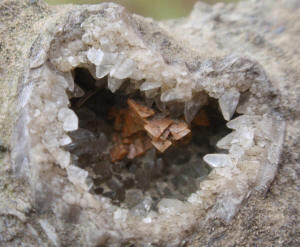
That's all for this month.
Now let's look at our February 2012 field trip to the Geier Collections
See photos of our previous trip to this site
October 2007
Back to the Field Trip Index Page
Return to Dry Dredgers Home Page
The Dry Dredgers and individual contributors reserve the
rights to all information, images, and content presented here. Permission to
reproduce in any fashion, must be requested in writing to admin@drydredgers.org.
www.drydredgers.org is designed and maintained by Bill Heimbrock.